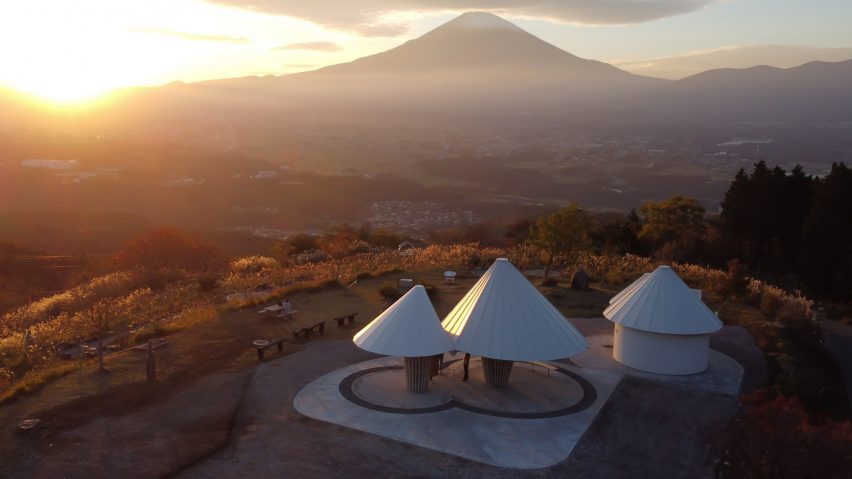
Kengo Kuma adds mountain-shaped toilets to hiking trail overlooking Mount Fuji
Japanese architecture studio Kengo Kuma and Associates has designed a collection of peaked umbrella-shaped structures that were informed by the surrounding mountains for a rest area in Japan.
The Oath Hill Park is a rest area with toilets and an observation deck in a rural, mountainous location along a popular hiking trail on the eastern outskirts of the town of Oyama in Japan.
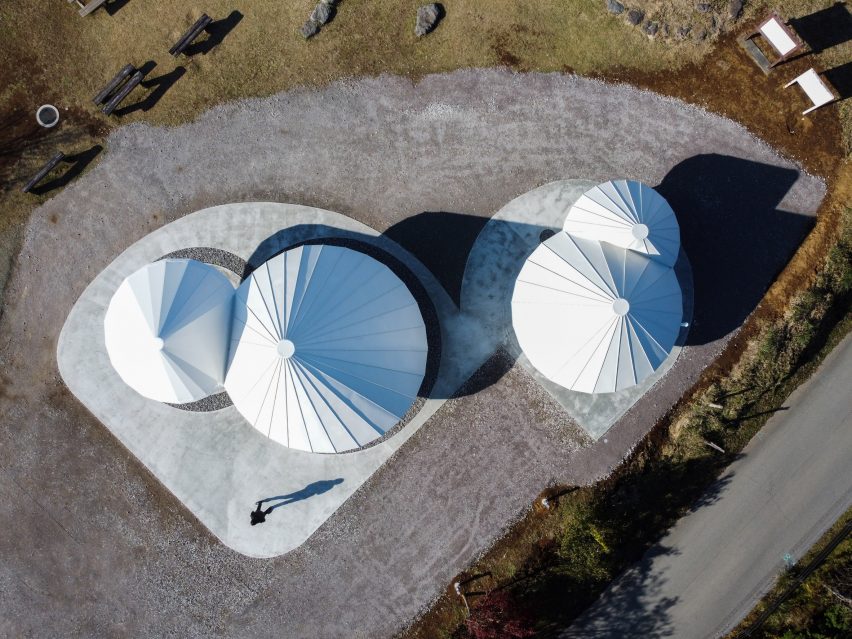
Kengo Kuma designed a collection of umbrella-shaped timber structures that resemble the tapering form and snowy peak of the distant Mount Fuji for the small "park."
Oath Hill Park is comprised of a sheltered observation deck beneath two adjoining umbrella canopies where hikers can rest, as well as restrooms that were positioned adjacent to the rest area.
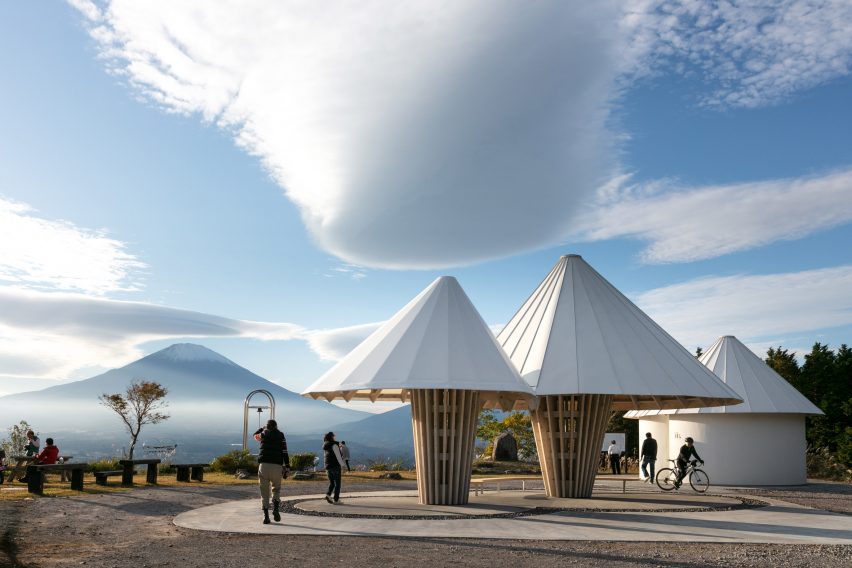
The two umbrella-shaped forms, used as the observation deck and for sheltered resting, were titled Eastern House. These interlock at their roof and are completely open at ground level, where they are encircled by a long curving bench.
The umbrella canopies are supported by large internal columns which, like the canopies themselves, were constructed using wooden pillars that were tied together with large iron rings.
One of the roofs that forms part of the sheltered observation areas was wrapped in a translucent fluorine-coated membrane that reveals the timber skeleton beneath when it is illuminated.
Inside the Eastern House house structure, the wooden skeleton was left exposed to highlight the structural integrity of the building and maintain a connection with the undersides of the viewing and rest areas.
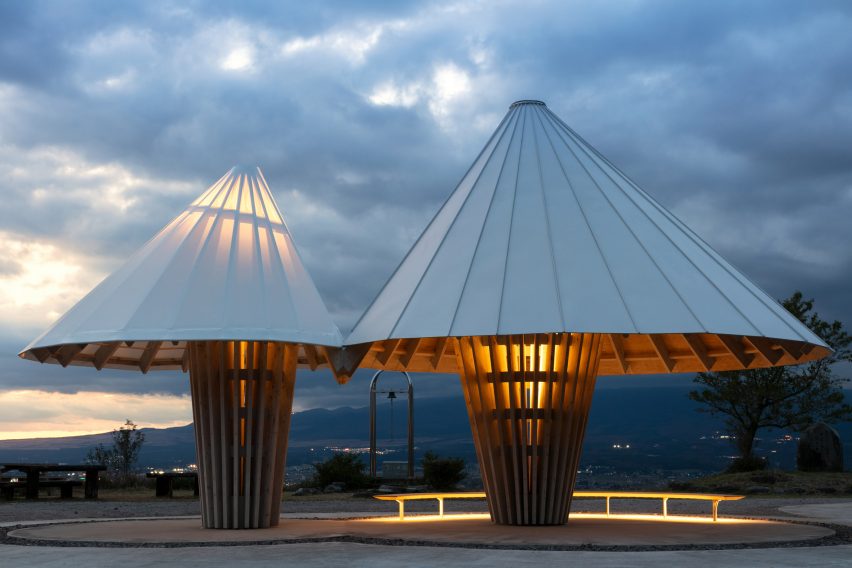
The adjoining roof was clad in an opaque material that was similarly treated with fluorine for weatherproofing qualities.
The toilet structure has a cylindrical form and an identical opaque, peaked roof. The walls of the building were wrapped in a white render that echoes the colour of the roof that tops it, as well as the snow on Mount Fuji.
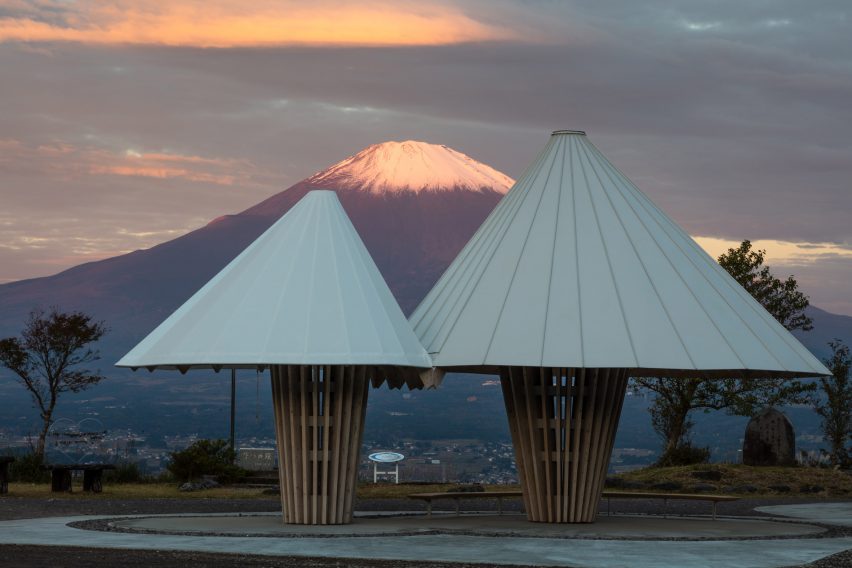
Elsewhere in Japan, the non-profit organisation Nippon Foundation organised Tokyo Toilet, a project that saw architects upgrade Tokyo's downtown district of Shibuya's public toilets.
As part of the project, Toyo Ito created a public toilet that is housed within three mushroom-shaped volumes, while Wonderwall referenced primitive Japanese huts by building toilets within a maze of board-marked concrete walls.
Kengo Kuma and Associates recently unveiled plans to add a contemporary, sculptural stone entrance to a gothic cathedral in France. The architecture practice also built the cedar-clad Japan National Stadium for the Tokyo 2020 Olympics.